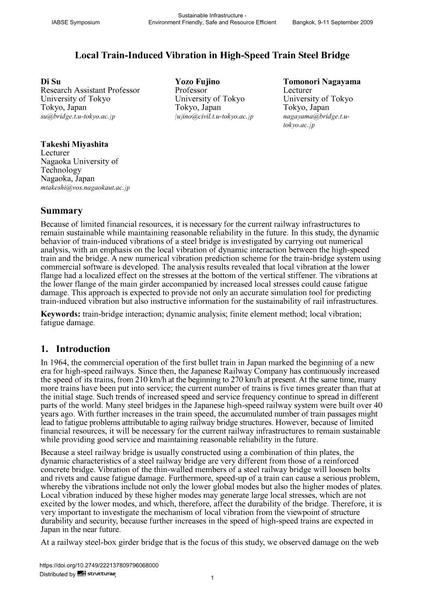Local Train-Induced Vibration in High-Speed Train Steel Bridge

|
|
|||||||||||
Bibliographic Details
| Author(s): |
Di Su
Yozo Fujino Tomonori Nagayama Takeshi Miyashita |
||||
|---|---|---|---|---|---|
| Medium: | conference paper | ||||
| Language(s): | English | ||||
| Conference: | IABSE Symposium: Sustainable Infrastructure - Environment Friendly, Safe and Resource Efficient, Bangkok, Thailand, 9-11 September 2009 | ||||
| Published in: | IABSE Symposium Bangkok 2009 | ||||
|
|||||
| Page(s): | 44-53 | ||||
| Total no. of pages: | 8 | ||||
| Year: | 2009 | ||||
| DOI: | 10.2749/222137809796068000 | ||||
| Abstract: |
Because of limited financial resources, it is necessary for the current railway infrastructures to remain sustainable while maintaining reasonable reliability in the future. In this study, the dynamic behavior of train-induced vibrations of a steel bridge is investigated by carrying out numerical analysis, with an emphasis on the local vibration of dynamic interaction between the high-speed train and the bridge. A new numerical vibration prediction scheme for the train-bridge system using commercial software is developed. The analysis results revealed that local vibration at the lower flange had a localized effect on the stresses at the bottom of the vertical stiffener. The vibrations at the lower flange of the main girder accompanied by increased local stresses could cause fatigue damage. This approach is expected to provide not only an accurate simulation tool for predicting train-induced vibration but also instructive information for the sustainability of rail infrastructures. |
||||
| Keywords: |
finite element method (FEM) fatigue damage dynamic analysis local vibration Train-bridge interaction
|
||||
